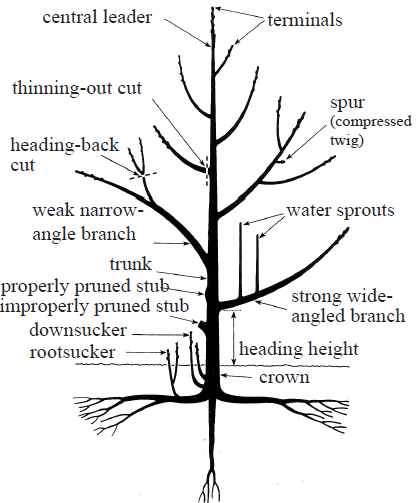Timing and method of fruit tree pruning can enhance the amount and quality of your crop.
Ideally, pruning needs to be carried out every 2-3 years for the best results, promoting healthy, productive, fresh looking trees. This article looks into why it is important to prune fruit trees and how you can reap the rewards of a flourishing fruit tree after professional pruning.
Encourages growth
Pruning during the rainy season helps with the growth of new branches, eliminating the problem of the growth of your fruit tree becoming obstructed by old or damaged branches. Not only that, professional pruning using specialist techniques promotes stronger roots, ensuring that your tree can withstand extreme weather, such as strong winds and storms.
It’s worth noting that pruning your fruit tree in hot season can expose the fruit to sun damage and slow down the ripening process.
Pruning to balance growth and fruit production
Fruit grows best on wood that is 2-5 years old, but old un-pruned trees tend to produce large crops at the expense of new growth. This means that over time fruit quality can become poor, as it is all being produced on very old fruiting wood. Pruning helps maintain the balance as it causes dormant buds in the old wood to produce vegetative growth that will become the next young fruiting wood. Pruning controls the age and position of the cropping wood which will improve fruit quality.
Protects against tree-related diseases
Leaf curl, brown rot and bacterial canker are just a few of the diseases fruit trees can suffer from if not cared for properly. Professional pruning is a preventative measure to stop your tree from contracting such diseases, encouraging a long and healthy lifespan. Not only that, in cases where fruit trees have already contracted a disease, pruning will help to ensure it is swiftly and safely treated to stop the spread to other parts.
Managing tree size and shape
Un-pruned trees can develop overcrowded crowns of twigs in close proximity. These thick crowns put them at risk of wind throw. This can result in limb loss, tree fall or root damage, all of which directly affect the health of your tree.
Pruning to restrict the crown, the height or the spread of your tree can reduce the chances of this damage, as well as balancing shape of the tree.
Overall Health
Regular pruning keeps a fruit tree healthy overall. Removing branches strategically prevents overcrowding of the tree. By removing the weaker branches, you give the strong, healthy branches more room to grow. The lower and inner branches receive more sunlight with the removal of some of the top branches. This even distribution of sunlight means your fruit tree is able to grow more vigorously. A strong, vigorous tree is less susceptible to damage from environmental factors, disease or pests. If the tree does receive damage, removing dead, damaged and diseased branches from the tree prevents the spread so the remaining portions of the tree stay healthy and continue growing.




